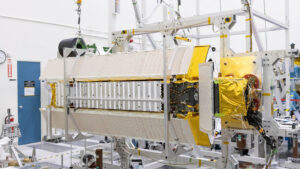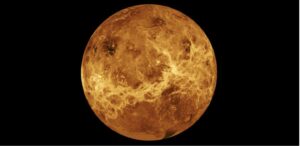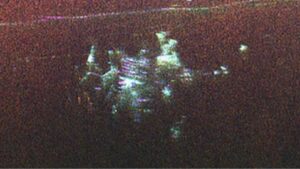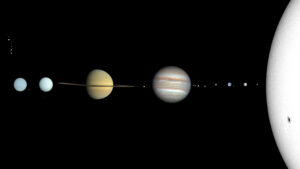Just days after a SpaceX rocket blasted off toward the moon, its one-of-a-kind payload made history.
The Odysseus IM-1 Lunar Lander, built by Houston’s Intuitive Machines, became the first American spacecraft to touch the moon in over 50 years. It was also the first privately constructed rig to do so.
Touchdown occurred around 5:30 U.S. Central Time Thursday night, following the week-long spaceflight.
Intuitive Machines reported the craft’s approach as excellent, although it did add one more orbit to make adjustments before landing. In a livestream of the event, a company spokesman said a laser instrument on the craft was not providing altitude and velocity data as prescribed.
Landing was an autonomous process. Mission controllers stood by and watched — as long as they could — while Odysseus negotiated its lunar approach. When it did touch down, a communication lapse took place.
‘Home,’ but what now?
Though the interruption was expected, the mission’s outcome hung in the balance. Dr. Tim Crain, the mission director and Intuitive Machines’ chief technology officer, eventually confirmed landing.
“Houston, Odysseus has found its new home,” Crain said.
That home, according to The New York Times, was a flat area near the Malapert A crater, about 300km north of the south pole.
Though Crain fired off the good news, he later admitted that it remained unclear whether the spacecraft would be able to meet its further objectives.
‘Rideshare’ to the moon
Intuitive Machines positions the program as a “lunar access service” for commercial interests and government space agencies. In fact, it’s a response to a NASA initiative that seeks to outsource any less-technical aspects of space exploration. Commercial Lunar Payload Services, or CLPS, will help deliver gear and humans to the moon more efficiently.
“NASA is really good at doing robotics space science missions, whether that’s the James Webb Space Telescope or the Mars Rovers,” said Dr. Joel Kearns with NASA’s Science Mission Directorate. But when programs like Artemis started to gain momentum, “we turned to industry to see if they could actually take us to the moon instead of us having to do that ourselves.”
Intuitive Machines’ lunar program promises to deliver payloads of up to 1,000 kilograms to the moon with a function it calls “rideshare.”






